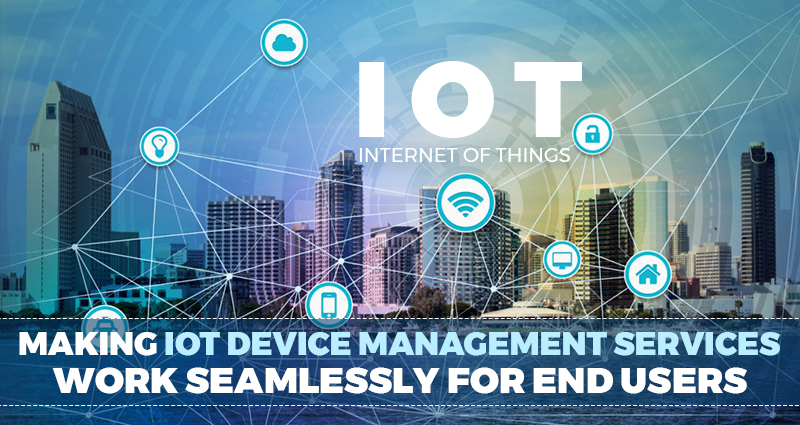Making IoT Device Management Services Work Seamlessly for End Users

One of the major challenges in the way of the Internet of Things (IoT) applications in routine transactional matters is that most IoT device management services are tied up to specific vendor applications. That’s because device management in IoT is not based on any open source platform although innovators across the world are currently developing such a platform. Since it is generally accepted that the problem for IoT arises at the level of the consumer, a lot of focus is now on the adapting it to the user experience. This is extremely critical for IoT to fulfill its potential as a path-breaking and user-friendly innovation. Therefore all efforts of IoT innovators are now aimed at developing a standardized communications protocol and standardizing user experience.
IoT solutions in the retail business ecosystem
The retail industry with its endless interface points connecting to the end user can be a major beneficiary of the solutions that IoT offers. That depends on how well this integration of the different segments of the retail industry aligns with each other. In a situation where a consumer buys a smart microwave oven from one original equipment manufacturer (OEM) and a smart refrigerator from another OEM, s/he would require a certain degree of interoperability by a common single user. That’s one of the main objectives of IoT proliferation at the level of the consumer.
In order to provide maximum value to the consumer through IoT, you need to provide him/her access to the identity of that device or appliance and connect it securely to his/her personal identity. This will allow the consumer to securely manage the software and firmware of the respective OEMs whose products are being integrated. A standardized and easy-to-operate workflow that is supported by the respective OEMs sets the protocol for easy integration. Thereafter, an IoT gateway supporting the protocol will make the integration of the devices easier by allowing access to the management service of the OEMs.
Getting a grip on device management
The objective of the IoT device management services is to validate, streamline, configure, monitor and maintain the integration software that enables the functionality of the respective equipment. Sustaining the security, efficacy and connectivity of IoT enabled equipment requires effective device management through a commonly established protocol. This is not easy because a lot of IoT enabled devices tend to become obsolete in the absence of a common protocol to integrate them to other equipment from similar or different but related genres.
Integrating the IoT solution to different products is not easy even when the device management protocol allows it. The simple reason for that is the difference in the new device management process making the integration that much more difficult. Such a difference may be much more of a complexity for consumers to handle on their own. Smart devices require consumers to learn through a mixture of interest in the functionality of these devices and barring a minority of users, most are affected by a certain amount of inertia. Therefore, IoT integration has to be streamlined with a tried and tested protocol that maximizes the interoperability.